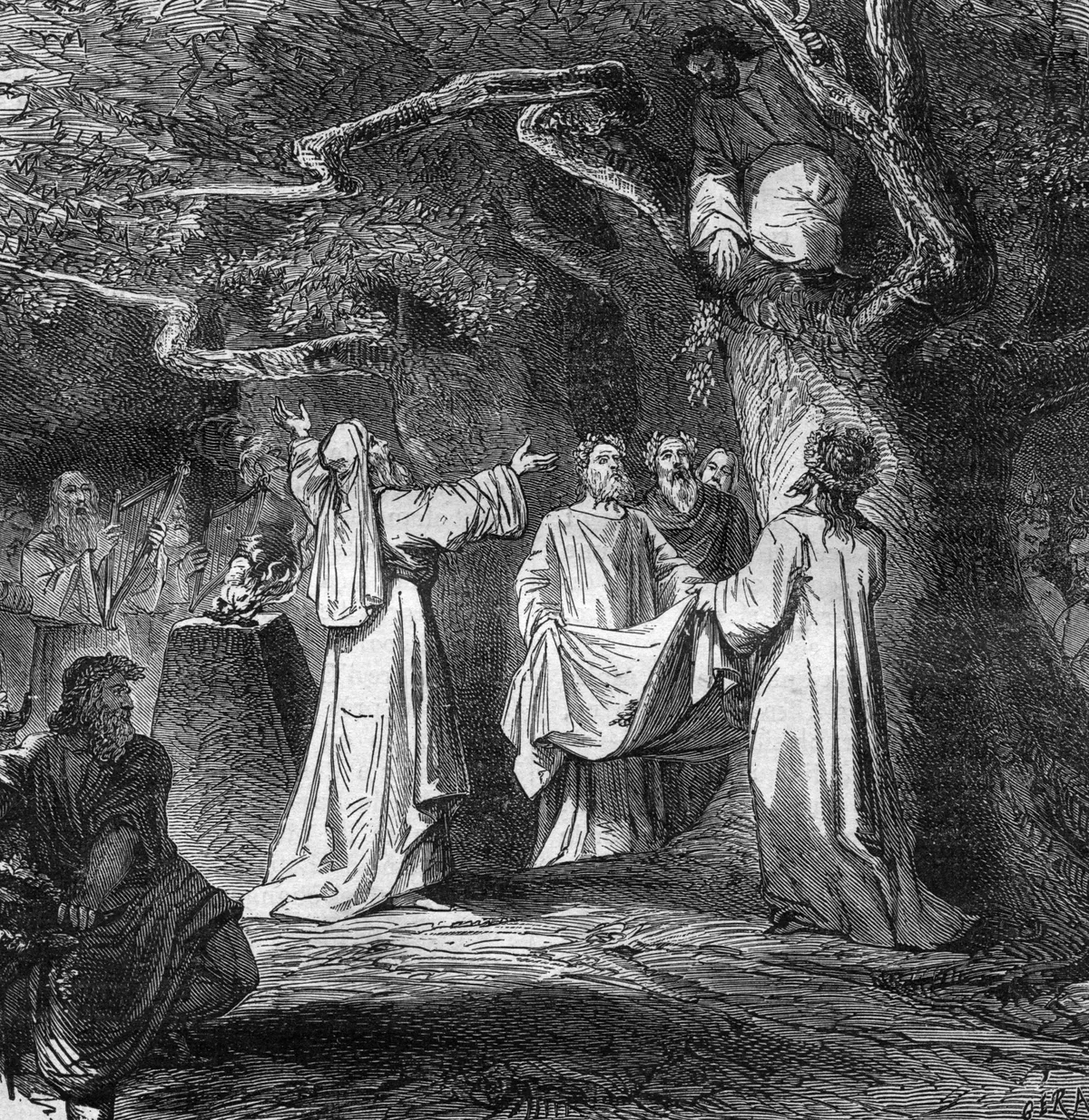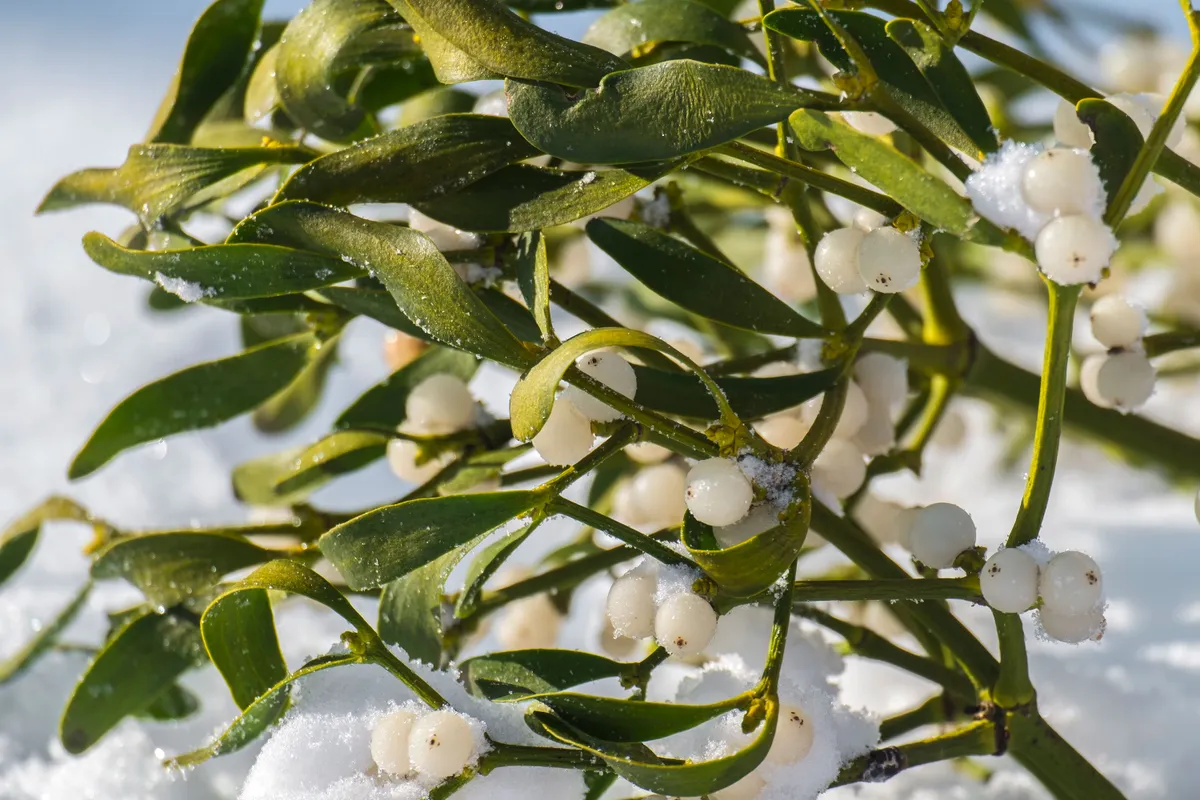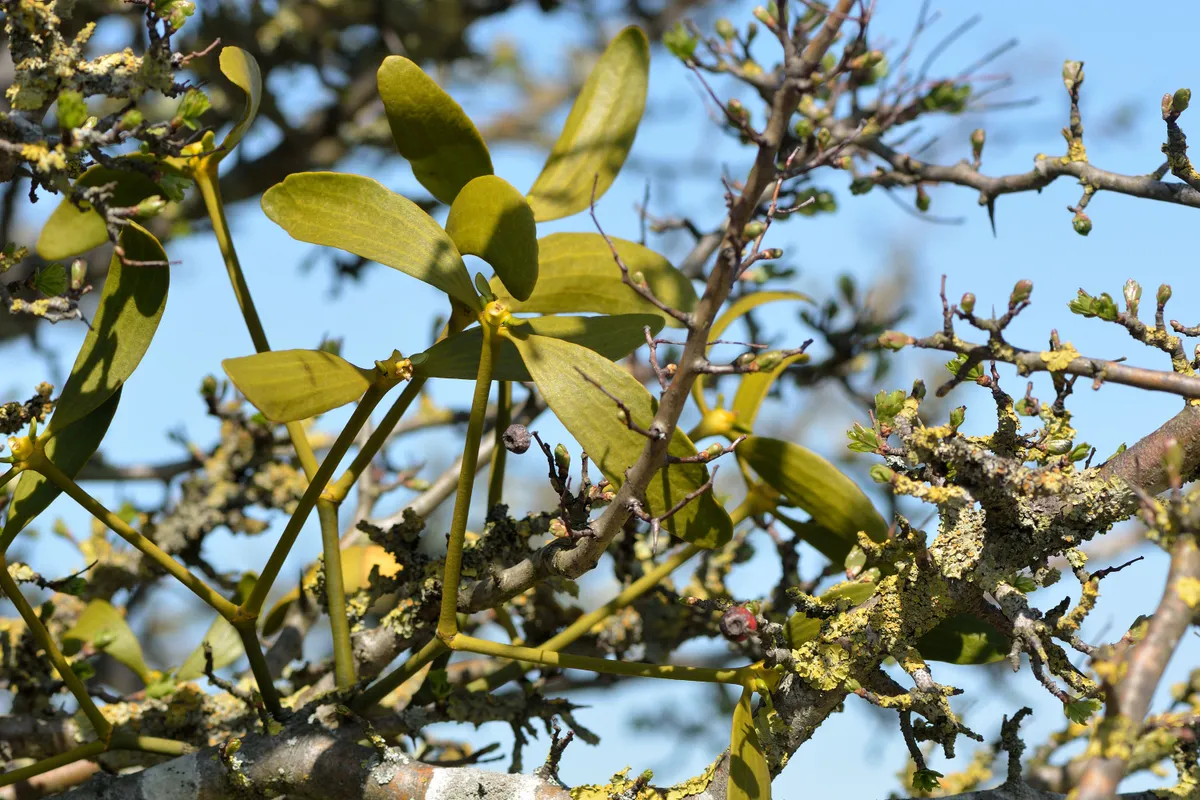With its white berries and rounded drooping leaves, mistletoe makes a pretty festive decoration in any hallway. But this plant – loved by hopeless romantics the world over – is semi-parasitic, spread by bird poo and poisonous to animals. So why do we kiss under it?
Our mistletoe guide looks at the origins of this plant in the UK, where it grows, how it became a Christmas tradition, whether it's poisonous and how to grow your own mistletoe.
Where does mistletoe grow?
Mistletoe grows in the branches of trees – such as lime, poplar, hawthorn and, predominantly, cultivated apple. It never grows in the ground and is semi-parasitic. Like many plants, it produces its own food using photosynthesis, but it also extracts minerals and water from a host tree. While the plant grows all over the UK it is most abundant in the south and west Midlands and east Wales. Delightfully, mistletoe is commonly spread by birds through their poo which sticks to the tree and the mistletoe berries consumed by the bird start to grow.
What does the word mistletoe mean?
Taken from two Anglo Saxon words, 'mistel' and 'tan', the word mistletoe can be translated to mean 'dung on a stick'.
Where does the Christmas tradition of mistletoe come from?
The tradition of hanging mistletoe dates back to the ancient Druids who believed the plant brought good luck and helped protect against evil spirits. In Norse mythology, mistletoe symbolised love, which is where the custom of kissing under the mistletoe originates from. The ancient Greeks used mistletoe for medicine as a pain reliever and for conditions such as ulcers.

There are up to 1,500 species of mistletoe around the world. For many of us, the most familiar is European mistletoe (Viscum album) which is often used to decorate our homes at Christmas.
Why do people kiss under the mistletoe?
In the UK, the tradition of kissing underneath the mistletoe dates back to the 1700s but the Victorians continued the tradition of kissing under the mistletoe as it was thought to symbolise fertility and romance.
Is mistletoe poisonous?
Mistletoe won't kill you but it contains a poisonous protein called phoratoxin, which if consumed can cause drowsiness, blurred vision, diarrhoea, vomiting and seizures. It is also poisonous to animals so dog and cat owners may wish to avoid it as a foraged decoration.
Despite this, however, mistletoe is a good food source for wildlife, with birds eating the berries and bees, butterflies and other insects consuming the nectar.

How to grow your own mistletoe
It is perfectly safe to grow your own mistletoe, provided you carefully consider where to plant it and the impact it can have on other plants. Mistletoe takes nutrients away from trees so growth of mistletoe will reduce the development of the branches. Older, larger trees are better able to cope with mistletoe but smaller, younger trees may struggle which could reduce your fruit crop or cause water stress.
Cultivate your tree
It is not possible to grow mistletoe on all tree species. Tree species which are generally suitable include hawthorn, blackthorn, rowan, most apple varieties, willows, plum, lime and poplar. Try to pick an older tree for better chance of success.

Sow your mistletoe seeds
Using a fresh berry picked from mistletoe 'sow' your seed into a nook or cranny of the tree you wish it to grow on. A thicker branch which has access to plenty of sunshine is best. Loosen the bark and push the seed underneath.
Caring for your mistletoe
If your seeds are successful (not all will be so it is worth planting a handful for a better chance of success) then your mistletoe leaves should begin to appear. Mistletoe growth is fairly slow but after three or fours years you should have a small clump. If your mistletoe starts to take over your tree, prune it back to maintain your tree health.